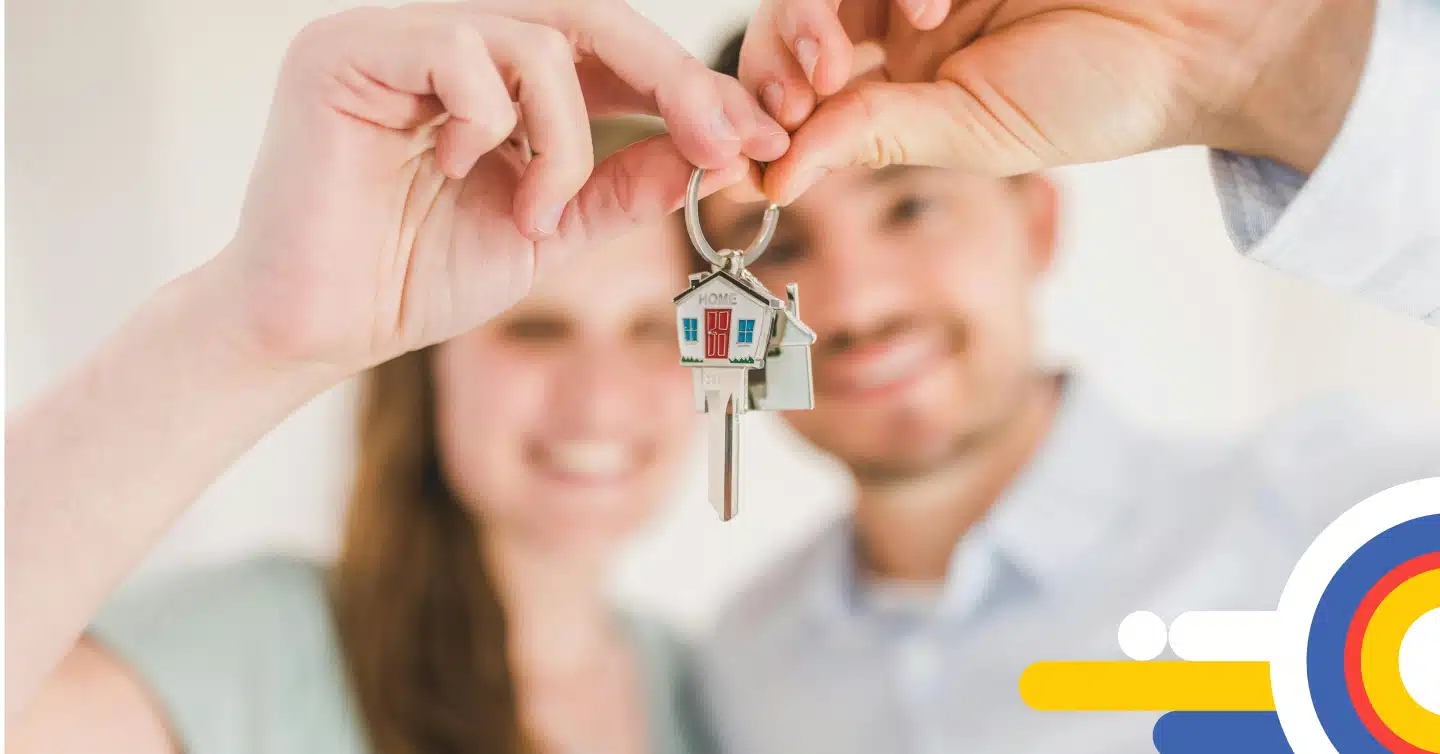Debt Consolidation In Canada: Leveraging Home Equity to Reduce Interest

Table of contents
Managing multiple high-interest debts can be challenging for many Canadians. Utilizing home equity for debt consolidation offers a strategic approach to simplify payments and potentially lower interest rates. This guide explores how to use your home’s equity to consolidate debt effectively, available options, and their advantages and disadvantages.
Key Takeaways
- Home equity can be a powerful way of leveraging the value of your home to consolidate high-interest debt into manageable payments.
- Refinancing by setting up a HELOC or a second mortgage offers unique debt consolidation benefits.
- Debt consolidation with home equity can lower interest rates, simplify payments, and support long-term financial health.
Understanding Debt Consolidation
Debt consolidation involves merging various high-interest debts into a single loan, often secured by your home equity. This strategy can lead to lower interest rates and more manageable monthly payments. Common methods include:
- Home Refinance: Remortgaging a mortgage-free home to tap into its equity.
- Mortgage Refinance: Setting up a larger mortgage, HELOC, or second mortgage to access more funds.
- Mortgage Restructure: Adding additional loans or credit lines to a collateral charge mortgage, saving time and money compared to a full refinance.
-
Blend and Increase: Increase your mortgage amount and adjust your interest rate to access funds for debt consolidation at a lower rate without the refinance costs.
Home Refinance
If you own your home outright and have no mortgage, you can consider remortgaging it—often called a “home refinance.” This process involves taking out a new mortgage on your home, allowing you to access the equity you’ve built up over time. It enables homeowners to convert some of their home’s value for various financial needs.
Home refinancing is often chosen by those looking to free up funds for significant expenses, such as renovations, investments, or consolidating higher-interest debt. Because there’s no existing mortgage to refinance, this process resembles applying for a first mortgage on a new property. The lender will assess the home’s current market value and evaluate the homeowner’s credit profile, income, and overall financial stability. With the property as collateral, remortgaging can offer lower interest rates than unsecured loans or credit cards, making it an efficient way to access substantial amounts of money.
Mortgage Refinance
Mortgage refinancing involves replacing an existing mortgage with a new one, often with a larger balance or improved terms and conditions, enabling homeowners to access additional funds. This option can be helpful for those looking to tap into the equity they’ve built over time, allowing them to use the funds for significant expenses or consolidate debt more efficiently. Refinancing can offer lower interest rates or more manageable repayment terms, making it an appealing choice for many homeowners.
There are different ways to refinance depending on financial goals. Some homeowners increase the loan amount, giving them access to their accumulated equity for debt consolidation, renovations, education, or major purchases. Another option is setting up a home equity line of credit (HELOC), a revolving credit line secured by the property. This allows for flexible borrowing up to a pre-approved limit, with interest-only, 2% or 3% repayment terms similar to those of a credit card.
Alternatively, a homeowner might add a second mortgage rather than replace the original one, resulting in two separate mortgage registrations and monthly payments. This second mortgage is often used for targeted financial goals or urgent expenses. However, the second mortgage needs approval from your first mortgage lender and must be paid off and discharged before your first mortgage’s maturity; otherwise, switching lenders at renewal may be costlier due to postponement.
Mortgage Restructure
Mortgage restructuring typically involves adjusting how your mortgage and additional credit facilities, such as a home equity line of credit (HELOC), are organized within a collateral charge mortgage. This allows you to make these changes without refinancing your current mortgage. A collateral charge mortgage offers the flexibility to add new loans, such as a secondary mortgage facility or HELOC, without discharging the mortgage registered against your home. This approach can make it easier and faster for homeowners to access more funds or adjust their borrowing structure to suit changing financial needs.
With a collateral charge mortgage, you can structure multiple credit facilities within a combined loan plan (CLP) global limit, each with separate terms and rates. This allows for various borrowing options and can save on costs associated with refinancing, such as legal and appraisal fees. Mortgage restructuring within a collateral charge mortgage is time-efficient and cost-effective, allowing homeowners to access additional credit without an exhaustive process. This approach can be ideal for those anticipating future borrowing adjustments or extra funds.
Blend and Increase
A blend and increase option allows your lender to increase your mortgage amount while adjusting the interest rate, offering a cost-effective way to consolidate debt without incurring the fees or penalties typically associated with a mortgage refinance. This option can help homeowners take advantage of lower interest rates while securing additional funds for debt consolidation, making it a popular choice for those looking to manage debt more affordably. Instead of the complete refinancing process, this approach provides more flexibility and savings, giving borrowers access to better rates with less hassle.
With a blend and extend option, you can secure a new, blended interest rate over a longer term, potentially reducing your monthly payments. Alternatively, a blend to term keeps your original mortgage term length while combining your existing rate with the new rate, an ideal solution if you prefer not to extend your mortgage commitment. In some cases, lenders may require an increase in your mortgage balance when choosing either option, as they may need to offset any financial loss that could result from reducing your interest rate before the maturity date without penalties. By selecting a blend and increase, you gain additional funds for debt consolidation and avoiding refinancing costs.
High interest rates got you stressed?
Find your low rate refinance with nesto today
Benefits of Debt Consolidation Using Home Equity
- Lower Interest Rates: Loans and credit lines secured against your home equity typically have lower interest rates, reducing monthly payments and long-term interest-carrying costs.
- Simplified Payments: Consolidating multiple debts into a single payment streamlines financial management.
- Potential Credit Score Improvement: Consistent, on-time payments on a consolidated loan can positively impact your credit score while showing your paid-off loans as “paid in full” on your credit history.
Considerations and Risks of Debt Consolidation Using Home Equity
- Extended Repayment Period: Lower monthly payments mean extending your amortization along with the repayment timeline, potentially increasing the total interest paid.
- Risk to Homeownership: Moving unsecured debts into home equity means defaulting could lead to foreclosure.
- Potential for Accumulating New Debt: Without disciplined financial habits, consolidating debts can create an opportunity to incur further debt.
Debt Consolidation Options and Requirements
| Option | Equity Required | Interest Rate | Benefits | Consideration |
|---|---|---|---|---|
| Refinancing | More than 20% | Lower than unsecured debts | Combines debts into one payment | Prepayment penalties, closing costs and higher interest rates than purchases/renewals |
| Second Mortgage | More than 20% | Higher than the first mortgage | Access to a lump sum | It typically comes with higher interest rates, additional debt, and additional processes, including postponement and separate discharge costs. |
| HELOC | More than 35% | Variable rates | Flexible access to funds | Variable interest rates, the potential for increased debt, and over-utilization of revolving credit can lower credit scores. Interest-only payments on HELOCs require financial discipline. |
| Blend and Increase | More than 20% | Lender offers a weighted interest rate based on the market, similar to or lower than your original mortgage. | An increased mortgage amount. | A no-cost (refinance or penalty) option through lenders that offer this benefit. You carry the same mortgage with an increased balance and a different weighted interest rate. |
Common Types of Debts Suitable for Consolidation
Personal Lines of Credit and Unsecured Loans: Merging these debts into a single mortgage can lead to lower interest rates and simplified payments.
Credit Card Debt: High-interest credit card balances can be consolidated into a lower-rate home equity loan.
Student Loans: Combining multiple student loans into a single payment can simplify finances and reduce interest rates.
Auto Loans: Consolidating car payments can streamline management and offer interest savings.
Mortgages giving you a headache?
Take a breather and work with nesto experts to make it easy for you.
Frequently Asked Questions (FAQ) on Debt Consolidation Using Home Equity
Can I consolidate my debt into a first mortgage?
Yes, consolidating your debt into a first mortgage is possible if you meet the lender’s requirements. This can streamline your monthly payments and potentially lower your overall interest costs, as mortgage rates are generally lower than rates for unsecured debts.
Is refinancing to consolidate debt a good idea?
Refinancing to consolidate debt can be beneficial if it results in lower monthly payments, lower overall interest costs, and fits your long-term financial goals. By refinancing, you can combine high-interest debts into a single, more manageable monthly payment at a lower interest rate, as mortgage rates are typically more favourable than those for unsecured debt. However, it’s essential to consider any prepayment penalties associated with your current mortgage and the new loan’s terms. If the savings on interest and the reduction in monthly payments outweigh the penalties and fees, refinancing can help improve cash flow, reduce financial stress, and streamline debt management.
Can I combine debt into an existing mortgage?
Yes, combining debt into an existing mortgage is possible if you have sufficient home equity and your lender or mortgage charge allows. Processes known as a “cash-out refinance” or “equity take-out (ETO)” will enable you to borrow against the equity you’ve built in your home to pay off other high-interest debts if your lender allows you to blend your mortgage than you could blend and increase, using the increased mortgage to payout unsecured debt while avoiding typical refinance costs. By consolidating debt into your existing mortgage, you could benefit from lower interest rates and a single monthly payment, making debt management easier and potentially saving on interest over time.
Final Thoughts
Leveraging your home equity for debt consolidation can be helpful for many Canadians seeking financial relief from high-interest debt. With options like refinancing, mortgage restructuring, second mortgages, or setting up a home equity line of credit (HELOC), you can simplify payments and reduce interest-carrying costs, all while supporting your long-term financial goals. Each method has benefits, from lower interest rates to flexible borrowing options, allowing you to choose the right path for your unique financial circumstances. By consolidating high-interest debt into a single, lower-rate payment, you can streamline your finances, lower monthly payments, and improve your credit profile.
If you’re ready to explore debt consolidation using your home equity, consider speaking with a nesto mortgage expert. Our mortgage professionals can help you navigate strategies to access funds from your home equity to consolidate high-interest debts.
Why Choose nesto
At nesto, our commission-free mortgage experts, certified in multiple provinces, provide exceptional advice and service that exceeds industry standards. Our mortgage experts are non-commissioned, salaried employees who provide impartial guidance on mortgage options tailored to your needs and are evaluated based on client satisfaction and advice quality. nesto aims to transform the mortgage industry by providing honest advice and competitive rates using a 100% fully digital, transparent, seamless process.
nesto is on a mission to offer a positive, empowering and transparent property financing experience – simplified from start to finish.
Contact our licensed and knowledgeable mortgage experts to find your best mortgage rate in Canada.
Ready to get started?
In just a few clicks, you can see our current rates. Then apply for your mortgage online in minutes!
in this series Mortgage Refinance
- removing cosigner canada next read
- How to Refinance Your Mortgage next read
- When is it a Good Idea to Refinance Your Mortgage? next read
- Should I Switch Mortgage Providers? next read
- Refinancing to Consolidate Debt currently reading
- Cash-Out Refinance in Canada: How to Unlock Your Home’s Equity next read















